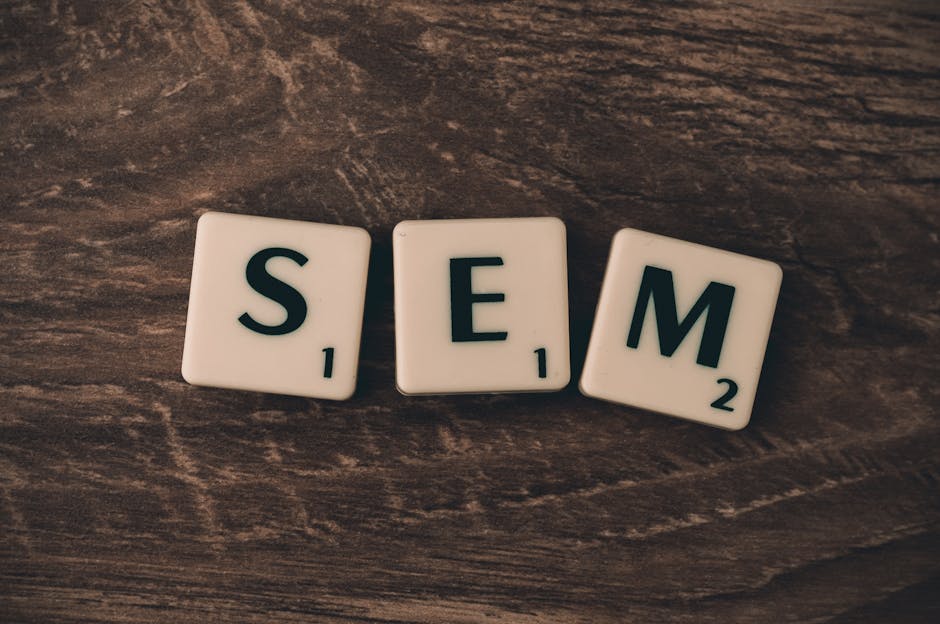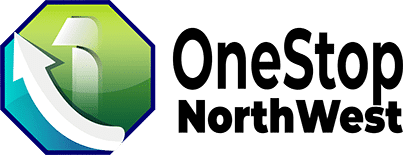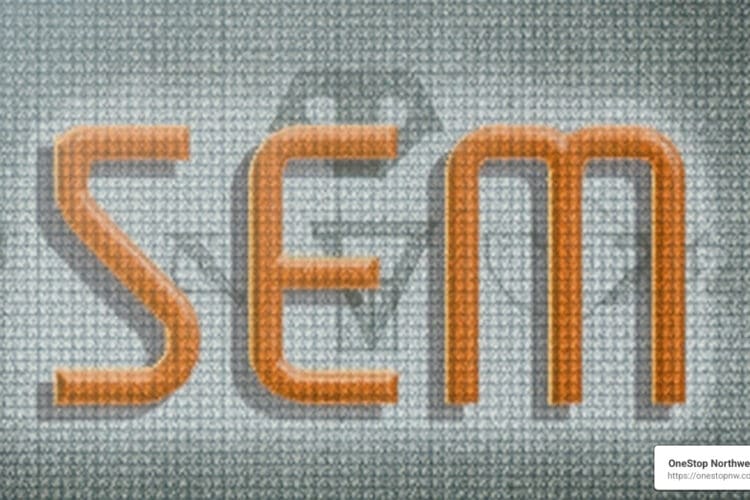
Why Search Engine Marketing is Crucial for Your Business
When it comes to boosting your business online, search engine marketing sem is a powerful tool you can’t ignore. Quickly, here’s what you need to know:
- SEM involves paying for ads that appear on search engines.
- SEO is about optimizing your website to rank high in search engine results organically.
Key differences:
- Cost: SEO is free but demands time. SEM is paid but offers immediate results.
- Timeline: SEO is a long-term game. SEM provides quick visibility.
- Techniques: SEO requires content creation, keyword optimization, and link-building. SEM focuses on PPC campaigns and ad strategies.
Search engine marketing sem can rapidly increase your online visibility and drive traffic to your website. Unlike SEO, where you wait to climb up the rankings, SEM places you at the top spot immediately through paid ads. This makes it ideal for businesses looking to make an instant impact.
My name is Dylan Cleppe. With over 20 years in customer service and business leadership, I’ve seen how effective search engine marketing sem can transform a business. My goal is to simplify your journey in digital marketing and help you make the most of SEM.

Search engine marketing sem vocab explained:
– search engine marketing definition
– search engine marketing vs seo
– seo optimization
Understanding Search Engine Marketing (SEM)
Definition
Search Engine Marketing (SEM) is a digital marketing strategy used to increase a website’s visibility in search engine results pages (SERPs). It involves paid advertising, primarily through pay-per-click (PPC) campaigns on platforms like Google Ads and Bing Ads. Unlike search engine optimization (SEO), which focuses on improving organic rankings, SEM provides immediate visibility by placing your ads at the top of search results.
Evolution
SEM has come a long way since the early days of the internet. Initially, search engines like Yahoo and AltaVista dominated the landscape. Marketers soon realized the potential of appearing at the top of search results and began using paid ads to achieve this. As Google emerged as the leading search engine, it revolutionized SEM with its Google Ads platform, offering a more sophisticated and targeted approach to paid search advertising.
In the past, SEM was often seen as a short-term strategy to gain quick visibility. However, as competition grew, the need for more refined and strategic SEM campaigns became evident. Today, SEM is an integral part of any comprehensive digital marketing strategy, combining immediate visibility with precise targeting.
Current Trends
Voice Search: With the rise of voice assistants like Siri and Alexa, optimizing SEM campaigns for voice search is becoming crucial. People use natural language when speaking, so incorporating long-tail keywords and conversational phrases can improve ad relevance.
Mobile Search: More Google searches now happen on mobile than on desktop. Ensuring your ads and landing pages are mobile-friendly is essential for capturing this growing audience. According to SEMrush, over 70% of shoppers buy online using their phones.

Artificial Intelligence (AI): AI is changing SEM by enabling more personalized ad targeting and optimizing ad copy. AI tools can analyze vast amounts of data to predict user behavior, helping marketers create more effective campaigns.
Ad Formats: Google Ads offers various ad formats, including Search Ads, Shopping Ads, and Local Ads. Each format serves a different purpose and can be custom to specific business goals. For instance, Shopping Ads are ideal for e-commerce businesses looking to showcase products directly in the search results.
Quality Score: Google’s Quality Score remains a critical factor in determining ad placement and cost-per-click. A high Quality Score can lower your ad costs and improve your ad’s position. This score is influenced by the relevance of your ad copy, keywords, and landing page experience.

Continuous Learning: The world of SEM is dynamic. Search engines frequently update their algorithms, and user behavior continually evolves. Staying up-to-date with the latest trends and best practices is vital for maintaining a competitive edge.
By understanding the definition, evolution, and current trends in search engine marketing sem, you can better steer this complex landscape and leverage SEM to grow your business effectively.
Next, we’ll dive into the Key Components of SEM, exploring the different types of paid search ads and how they work.
Key Components of SEM
Search Engine Marketing (SEM) is a powerful tool for boosting your website’s visibility through paid search ads. Let’s break down the key components that make SEM effective.
Paid Search
Paid search is the backbone of SEM. It involves placing ads on search engine results pages (SERPs) when users search for specific keywords. Unlike organic search results, these ads appear at the top or bottom of the SERPs and are labeled as “Sponsored” or “Ad.” Paid search provides immediate visibility, but it costs money every time someone clicks on your ad.
PPC (Pay-Per-Click)
Pay-Per-Click (PPC) is the most common model in SEM. As the name suggests, advertisers pay a fee each time someone clicks on their ad. This model allows for precise budget control, as you only pay for actual clicks. PPC can be highly effective for driving targeted traffic to your website, especially when combined with well-researched keywords and compelling ad copy.
Google Ads
Google Ads is the leading platform for PPC advertising. It uses an auction system to determine which ads to display and in what order. Here’s how it works:
- Keyword Bidding: Advertisers bid on keywords relevant to their business.
- Quality Score: Google evaluates the relevance and quality of your ad and landing page.
- Ad Rank: Your bid amount and Quality Score determine your ad’s position.
Google Ads offers various ad formats, including:
- Search Ads: Text ads that appear on SERPs.
- Shopping Ads: Product-based ads that include images and prices.
- Local Ads: Ads that promote local businesses on Google Maps and SERPs.
Bing Ads
Bing Ads, now known as Microsoft Advertising, is another popular platform for PPC campaigns. While Google dominates the market, Bing Ads can be a valuable addition to your SEM strategy. Bing Ads often have lower competition and cost-per-click (CPC), making it a cost-effective option for reaching a different segment of the audience.
Benefits of Bing Ads:
- Lower CPC: Less competition means you might pay less per click.
- Different Audience: Bing users tend to be older and have higher incomes.
- Integration with Microsoft Products: Ads can appear on Bing, Yahoo, and AOL search engines.
By understanding these key components—paid search, PPC, Google Ads, and Bing Ads—you can create a robust search engine marketing strategy that drives traffic, generates leads, and ultimately grows your business.
Next, we’ll explore Effective SEM Strategies, focusing on keyword research, crafting compelling ad copies, and optimizing landing pages for better conversion rates.
How Does Search Engine Marketing Work?
Understanding how search engine marketing (SEM) works can help you make the most of your advertising budget and get your ads in front of the right audience. Let’s break down the key elements: ad auctions, keyword bidding, and quality score.
Ad Auctions
Every time someone searches for a keyword you’re targeting, an ad auction takes place. This auction determines which ads will appear on the search engine results page (SERP) and in what order.
Here’s how it works:
- Identify Keywords: Choose keywords relevant to your business.
- Enter the Auction: When a user searches for those keywords, your ad enters the auction.
- Ad Placement: The auction decides if your ad will appear and where it will be placed based on several factors.
Not every keyword triggers an ad. For example, a search like “What is Marketing?” may not show ads because it lacks commercial intent.
Keyword Bidding
Once you’ve identified your keywords, you need to decide how much you’re willing to pay for each click. This is known as your bid.
Steps to Keyword Bidding:
- Set a Maximum Bid: Determine the highest amount you’re willing to pay per click.
- Choose Bid Strategy: Decide between manual bidding (you set bids) or automated bidding (Google sets bids to maximize results).
- Monitor and Adjust: Keep an eye on performance and adjust bids as needed.
High bids can improve your chances of winning the auction, but they aren’t the only factor.
Quality Score
Quality Score is a metric that Google uses to evaluate the relevance and quality of your ads, keywords, and landing pages. It’s rated on a scale of 1 to 10, with 10 being the best.
Factors Influencing Quality Score:
- Ad Relevance: How closely your ad matches the search query.
- Expected Click-Through Rate (CTR): How likely users are to click your ad.
- Landing Page Experience: Quality and relevance of the page users land on after clicking your ad.
A higher Quality Score can lead to better ad positions and lower costs-per-click (CPC). As Sophia Tang, founder of Zeralabs, shared, “By optimizing our ad copy and landing pages to be more relevant to our targeted keywords, we saw a clear improvement in ad placements and reduced our average cost-per-click.”
Putting It All Together
To succeed in search engine marketing (SEM), you need to:
- Choose the right keywords: Use tools like Google Ads Keyword Planner.
- Set competitive bids: Balance between cost and visibility.
- Improve Quality Score: Focus on relevance and user experience.
By mastering these elements—ad auctions, keyword bidding, and quality score—you can create effective SEM campaigns that drive traffic and conversions.
Next, we’ll explore Effective SEM Strategies, focusing on keyword research, crafting compelling ad copies, and optimizing landing pages for better conversion rates.
Effective SEM Strategies
To succeed in search engine marketing (SEM), you need well-planned strategies. These include choosing the right keywords, crafting compelling ad copies, and optimizing landing pages. Let’s dive into each of these.
Choosing the Right Keywords
Keyword research is the foundation of any SEM campaign. The right keywords can make or break your efforts.
Use Tools: Tools like Google Ads Keyword Planner and SEMrush can help identify high-intent keywords. These tools provide insights into search volume, competition, and cost-per-click (CPC).
Focus on Long-Tail Keywords: Long-tail keywords are longer and more specific phrases. They often have lower competition and higher conversion rates. For example, instead of “shoes,” use “affordable running shoes for women.”
Negative Keywords: These are terms you don’t want your ads to show up for. For example, if you sell premium products, exclude keywords like “cheap” or “discount.” This helps save on irrelevant clicks.
Crafting Compelling Ad Copies
Your ad copy needs to grab attention and encourage clicks. An ad is made up of several components: headlines, descriptions, and calls-to-action (CTAs).
Headlines: The headline is the first thing users see. It should be clear, specific, and include your main keyword. Keep it within the 30-character limit. For instance, “Top Graphic Design Services” is clear and direct.
Descriptions: The description provides more details. It should highlight benefits and include a CTA like “shop now” or “get a free quote.” Keep it within the 90-character limit. For example, “Affordable graphic design services. Get a free quote today!”
Calls-to-Action: A strong CTA can significantly improve your click-through rate (CTR). Phrases like “buy now,” “learn more,” or “sign up today” can make a big difference.
Optimizing Landing Pages for SEM
Once someone clicks your ad, they land on a specific page. This landing page should be optimized for conversions.
User Experience: Ensure that your landing page loads quickly, is easy to steer, and is mobile-friendly. A slow or confusing page can drive users away.
Relevance: The content on your landing page should match the ad. If your ad is about a sale, the landing page should prominently feature that sale.
Conversion Optimization: Include clear CTAs, concise messaging, and engaging visuals. Test different elements to see what works best. Tools like A/B testing can help you compare different versions of your landing page to find the most effective one.
Putting It All Together
By focusing on these strategies—keyword research, compelling ad copies, and optimized landing pages—you can create effective SEM campaigns that drive traffic and conversions.
Next, we’ll explore Tools and Technologies for Enhancing SEM, focusing on how to leverage analytics for SEM success.
Tools and Technologies for Enhancing SEM
Leveraging Analytics for SEM Success
In search engine marketing (SEM), leveraging the right tools can make a huge difference. Let’s explore some essential tools and technologies that can improve your SEM efforts.
Google Ads
Google Ads is a powerful tool for managing your SEM campaigns. It allows you to create and manage ads, set budgets, and track performance. With features like keyword planning and ad extensions, Google Ads helps you target the right audience effectively.
- Keyword Planner: This tool helps you find relevant keywords and see how they perform. It provides data on search volume, competition, and suggested bids.
- Ad Extensions: These provide additional information in your ad, such as phone numbers, locations, or links to specific pages on your website. They can improve your ad’s visibility and click-through rate (CTR).
Bing Ads
Bing Ads (now Microsoft Advertising) is another valuable platform for SEM. While it may not have the same reach as Google, it can still drive significant traffic, especially from a different demographic.
- Audience Targeting: Bing Ads offers robust targeting options, allowing you to reach specific audiences based on demographics, location, and device.
- Cost-Effective: Often, Bing Ads have lower cost-per-click (CPC) compared to Google Ads, making it a cost-effective option for many businesses.
SEMrush
SEMrush is a comprehensive tool that offers keyword research, competitor analysis, and site audits. It’s invaluable for planning and optimizing your SEM campaigns.
- Keyword Research: SEMrush helps you find high-intent keywords and long-tail variations. It also shows you what keywords your competitors are ranking for.
- Competitor Analysis: You can see where your competitors are concentrating their efforts, what keywords they’re bidding on, and the composition of their ads. This insight can help you refine your own strategy.
Google Trends
Google Trends allows you to track the search volume for specific keywords over time. This helps you identify trending search terms and avoid those that are declining in popularity.
- Regional Insights: You can see how interest in certain keywords varies by region. This is particularly useful for geo-targeting your ads.
- Trend Analysis: By understanding search trends, you can adjust your SEM strategy to focus on keywords that are gaining popularity.
Keywordtool.io
Keywordtool.io is a versatile tool that taps into multiple platforms like Google, Bing, YouTube, Amazon, and more. It helps you generate a comprehensive list of keyword variations.
- Google Autocomplete: This feature provides up to 750 long-tail keyword suggestions for every search term, helping you expand your keyword list.
- Channel-Specific Research: Whether you’re targeting Google, YouTube, or Amazon, Keywordtool.io helps you tailor your keyword research to specific channels.
Google Analytics
Google Analytics is crucial for tracking your website’s performance. It provides insights into user behavior, helping you understand how visitors interact with your site.
- Performance Metrics: Metrics like bounce rate, session duration, and pages per session help you gauge user engagement.
- Conversion Tracking: By setting up conversion tracking, you can see which ads are driving valuable actions on your site, such as purchases or sign-ups.
By leveraging these tools—Google Ads, Bing Ads, SEMrush, Google Trends, Keywordtool.io, and Google Analytics—you can improve your SEM efforts and achieve better results.
Next, we’ll dive into Frequently Asked Questions about Search Engine Marketing SEM, addressing common queries and concerns.
Frequently Asked Questions about Search Engine Marketing SEM
How does SEM differ from SEO?
Search Engine Marketing (SEM) and Search Engine Optimization (SEO) are both about improving your visibility on search engines. However, they take different paths to achieve this.
SEM involves paid ads. When you search for something on Google, the top results often have a small “Ad” label. These companies paid to be there. SEM lets you bid on keywords so your ads appear when people search for those terms.
SEO focuses on organic results. These are the unpaid listings that appear below the ads. SEO involves optimizing your website’s content, structure, and links to rank higher naturally. This takes time but can provide lasting results.
What are the benefits of integrating SEM in digital marketing?
Search Engine Marketing SEM can be a game-changer for your business. Here’s why:
-
Immediate Visibility: SEM ads appear at the top of search results almost instantly. This is great for new businesses needing quick exposure.
-
Highly Targeted: You can target your ads based on keywords, location, device, and even the time of day. This ensures you reach the right audience at the right time.
-
Cost-Effective: SEM uses a pay-per-click (PPC) model. You only pay when someone clicks your ad. This makes it budget-friendly because you control how much you spend.
-
Measurable: SEM provides detailed metrics. You can see how many people clicked your ad, how many converted, and adjust your strategy in real-time.
How to measure the success of an SEM campaign?
Measuring SEM success involves tracking several key metrics:
-
Click-Through Rate (CTR): This shows the percentage of people who clicked your ad after seeing it. A higher CTR means your ad is relevant to the audience.
-
Conversion Rate: This measures how many clicks resulted in a desired action, like a purchase or sign-up. It tells you if your ad not only attracts clicks but also drives meaningful actions.
-
Cost Per Click (CPC): This is the average amount you pay for each click on your ad. Lower CPC means you’re getting more clicks for less money.
-
Return on Ad Spend (ROAS): This metric shows how much revenue you earn for every dollar spent on ads. A higher ROAS indicates a more profitable campaign.
-
Quality Score: Google assigns a Quality Score based on your ad’s relevance, CTR, and landing page quality. A higher score can lower your CPC and improve your ad’s position.
By monitoring these metrics using tools like Google Analytics and Google Ads, you can fine-tune your SEM campaigns for better performance.
Next, let’s explore the Conclusion, where we’ll discuss the future of SEM and the importance of continuous learning.
Conclusion
OneStop Northwest: Your Partner in SEM Success
At OneStop Northwest, we understand that search engine marketing (SEM) is a powerful tool for driving traffic and increasing conversions. Our team is dedicated to helping you steer this complex landscape with ease. From keyword research to crafting compelling ad copies and optimizing landing pages, we offer a full suite of services to ensure your SEM campaigns are effective. Our expertise in custom web design, SEO optimization, and digital marketing makes us the ideal partner for your business’s SEM needs.
Explore our SEM services to see how we can help you achieve your digital marketing goals.
The Future of SEM
The digital marketing landscape is always evolving, and SEM is no exception. With advancements in AI and machine learning, SEM tools are becoming more sophisticated, allowing for better targeting and more accurate predictions of consumer behavior. Voice search and mobile-first indexing are also shaping the future of SEM, making it crucial to adapt to these changes to stay competitive.
Staying ahead in SEM means continuously updating your strategies and tools. At OneStop Northwest, we keep our fingers on the pulse of these changes to ensure your campaigns are always optimized for the latest trends and technologies.
Continuous Learning: The Key to SEM Mastery
SEM is not a “set it and forget it” strategy; it requires ongoing optimization and learning. Regularly updating your skills and knowledge is essential for staying ahead of the competition. Here are some tips for continuous learning:
- Stay Updated: Follow industry blogs, attend webinars, and participate in online forums to stay informed about the latest SEM trends and updates.
- Experiment: Don’t be afraid to try new strategies and tools. A/B testing can provide valuable insights into what works best for your campaigns.
- Analyze: Use analytics tools like Google Analytics to track your performance metrics and make data-driven decisions.
By embracing continuous learning, you can ensure that your SEM efforts remain effective and yield the best possible results.
Ready to take your SEM strategy to the next level? Partner with OneStop Northwest and let us help you steer the ever-changing landscape of search engine marketing. Contact us today to get started on your journey to SEM success.





